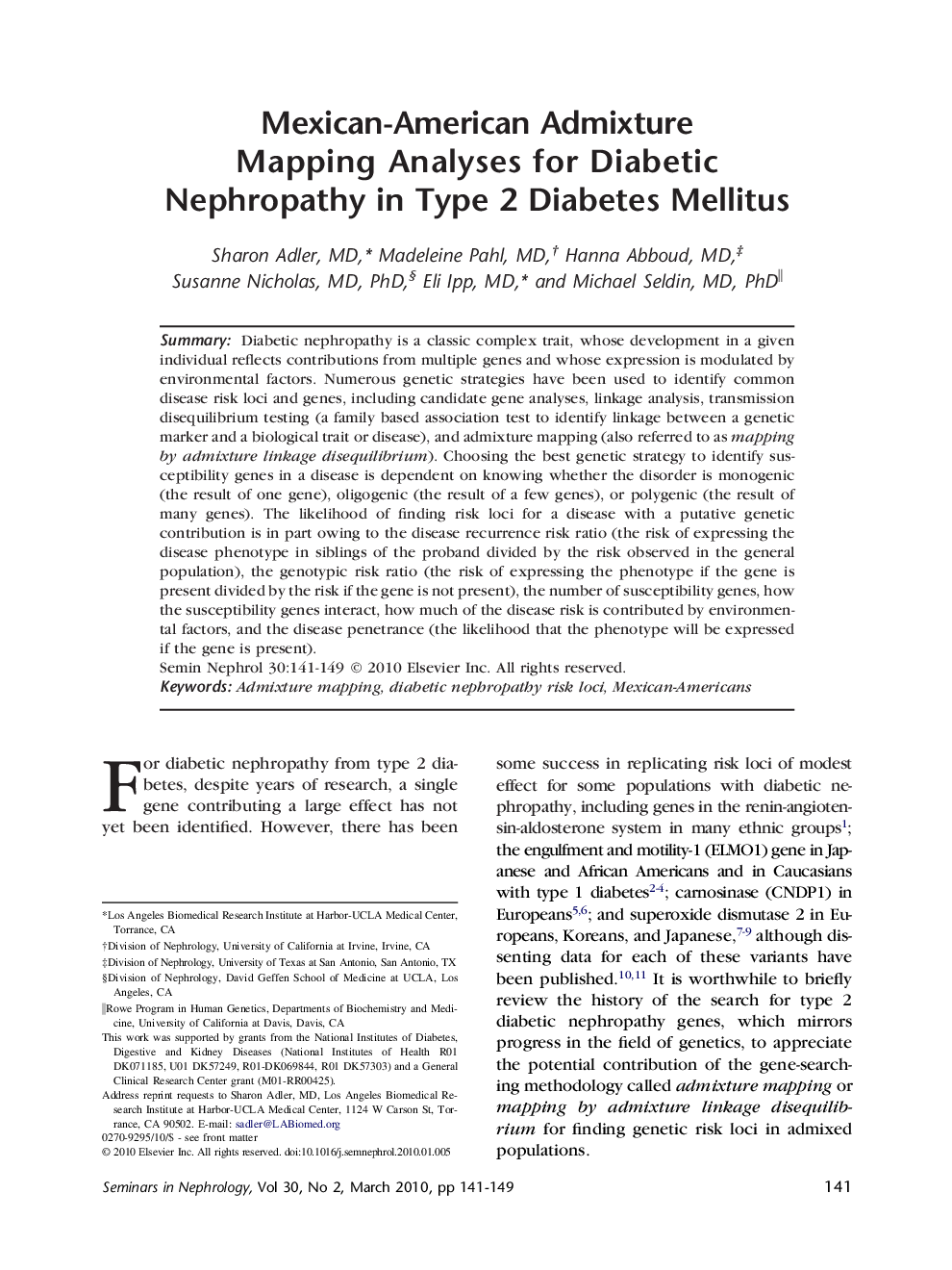| Article ID | Journal | Published Year | Pages | File Type |
|---|---|---|---|---|
| 3897044 | Seminars in Nephrology | 2010 | 9 Pages |
SummaryDiabetic nephropathy is a classic complex trait, whose development in a given individual reflects contributions from multiple genes and whose expression is modulated by environmental factors. Numerous genetic strategies have been used to identify common disease risk loci and genes, including candidate gene analyses, linkage analysis, transmission disequilibrium testing (a family based association test to identify linkage between a genetic marker and a biological trait or disease), and admixture mapping (also referred to as mapping by admixture linkage disequilibrium). Choosing the best genetic strategy to identify susceptibility genes in a disease is dependent on knowing whether the disorder is monogenic (the result of one gene), oligogenic (the result of a few genes), or polygenic (the result of many genes). The likelihood of finding risk loci for a disease with a putative genetic contribution is in part owing to the disease recurrence risk ratio (the risk of expressing the disease phenotype in siblings of the proband divided by the risk observed in the general population), the genotypic risk ratio (the risk of expressing the phenotype if the gene is present divided by the risk if the gene is not present), the number of susceptibility genes, how the susceptibility genes interact, how much of the disease risk is contributed by environmental factors, and the disease penetrance (the likelihood that the phenotype will be expressed if the gene is present).
